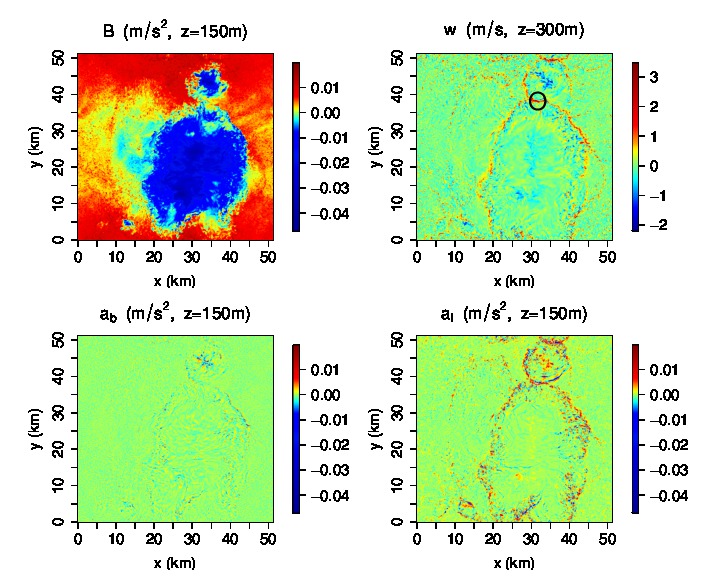Jeevanjee and Romps, Effective buoyancy, inertial pressure, and the mechanical generation of boundary-layer mass flux by cold pools, JAS, 2015
Paper
Description
The unresolved questions about the dynamics of convective clouds can be lumped into two broad categories, namely, how do these clouds get created, and how do they evolve once created? Here, we investigate the first process: what gives birth to these clouds? There are two possibilities. The first is that pools of warm and humid air at the surface launch off the surface under the force of their own buoyancy. The other possibility is that pools of warm and humid air are forced off the surface by other, colder pools of air that collide with them.
Which process dominates? To find out, we first derive a decomposition of forces that cleanly separates between these two effects: effective buoyancy (driven by buoyancy alone) and the inertial acceleration (driven by the motion of the fluid alone). Solving for these two terms requires solving a Poisson equation, which is done here in the context of high-resolution large-eddy simulations of deep convection. The result, as illustrated in the figure below, is dramatic: air parcels are launched off the surface by the forcing from colder pools that collide with them, not by the force of their own buoyancy. This information is a critical piece of input for convective parameterizations in GCMs.
For a snapshot from a large-eddy simulation, (top left) the standard buoyancy at 150 m, (bottom left) the effective buoyancy at 150 m, (bottom right) the inertial acceleration at 150 m, and (top right) the vertical velocity at 300 m. Note that the standard buoyacy is a wild overestimate of the true acceleration due to buoyancy (compare top left with bottom left). Next, comparing the inertial acceleration to the effective buoyancy, we see that the inertial acceleration is much larger and is colocated with the vertical velocity above.
